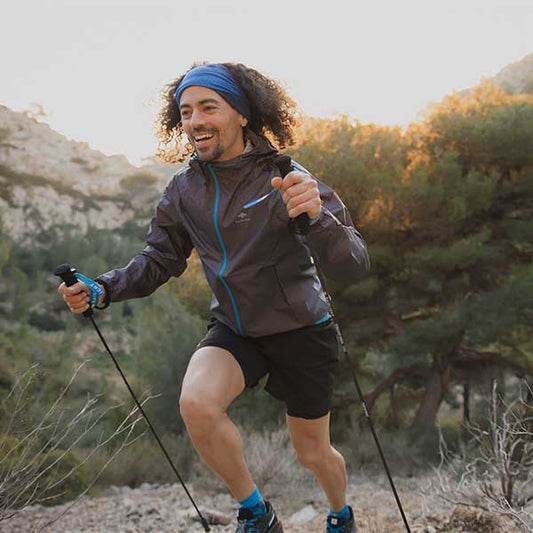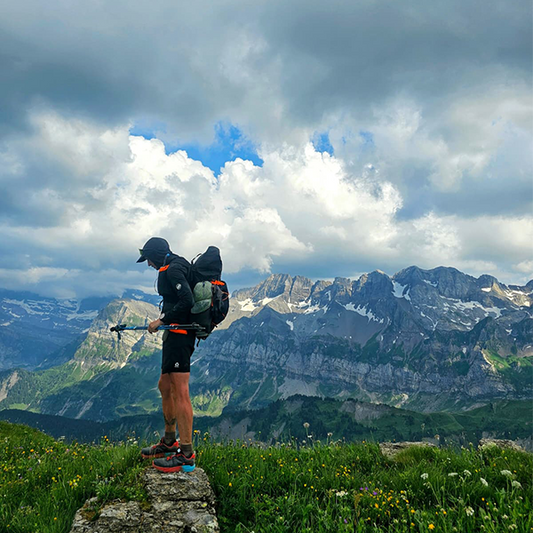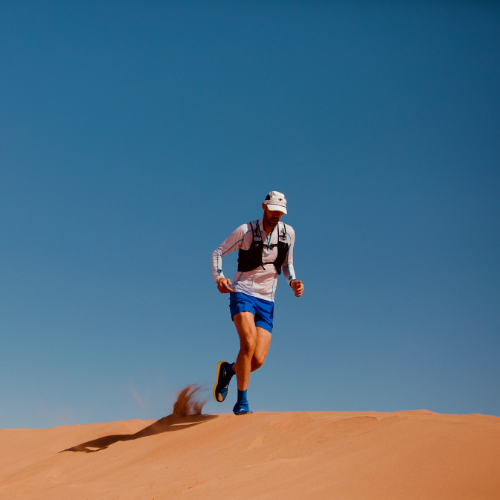Preparations for the UTMB®, Race to the King®, Montane Spine Race®... are starting. The ultra trail is a vast subject in the trail world. Often considered as the grail, it is the goal of many runners. To set off on an ultra trail is above all to live an inner adventure, a unique experience where you will have to draw on your strengths and push your limits to cross the finish line. Taking the start of an ultra trail means embarking on a demanding race, and good footwear is one of the keys to success. There are several criteria to take into account when choosing a pair of trail running shoes. It depends on the distance, but also on the terrain and the weather. In Ultra-Trails, it is simpler. The shoe must be versatile, because the conditions can be variable, but above all it must have the following 3 criterias:
- Comfort
- Grip
- Protections
The shoe is to the ultra trainer what the car is to the rally driver: the key element. The choice of shoe must therefore respect a certain logic: focus on the benefits of comfort, resistance and cushioning rather than on dynamism and lightness in view of the length of the effort that awaits you.
The Comfort
As with all shoes, trail or not, the most important thing is to feel comfortable in your trail running shoes. It is important to feel comfortable from the start. There is a good chance that your foot will swell with the heat and the duration of the effort, which is why it is advisable to take a size above your usual size. The aim is to have some room in the front of the shoe while keeping your foot in place.
Grip
Grip is probably the most important feature of a trail shoe. Running on tarmac does not require the shoe to be particularly roadworthy. You don't want to slip too much on the road markings or manhole covers when it's raining, but on the road the tricky conditions are limited to that. On the trail, the conditions can be very different. Running up a muddy hill or down one in the rain is a different story. Therefore you need trail running shoes with a grip. This requires strong grip.
Protection
The shoe is above all there to protect the foot from the outside. The trail shoe must also protect against the terrain. If your training ground is rocky and dry you will not choose the same shoes as for forest terrain. So look out for the front of the shoe, which should have a substantial stone guard extending over the sides of the foot.
The best way to find out which is the right trail shoe for the right race is to test it out in the field. Try different models on long runs to find the right feel.
Helping you excel and challenging you is what motivates and inspires us. At Raidlight, we are so convinced that our trail shoes will meet all your needs that we offer you to try them for 30 days and return them to us if they do not meet your expectations. Visit our dedicated page by clicking here.

If you are looking for performance, you may want to choose a trail shoe with a low drop for more dynamism. Drop" is the difference in height between the back and front of the shoe. The lower the drop, the more you should run on the front of the foot and have a natural, mechanical cushioning of the leg. But you will feel it pulling on your calves! So never start with a minimalist shoe on a race if you are not used to running in it regularly, you could get injured. For maximum comfort without compromising on grip and dynamism, we recommend a 6mm drop. Our Trail Running Shoe Ultra 3.0 has been studied and designed to meet this demand: it is the perfect shoe for ultra trails. Cushioning, reactivity and comfort, the ideal characteristics to face the many impacts of mountain running.
The runner's playground is covered with various abrasive elements: roots, rocks, brambles or branches on the ground. This is why we have equipped our Trail Running Shoe Ultra 3.0 with MATRYX® technology. Matryx® is a much stronger mesh, the weave combines high tenacity yarns with technical yarns. It is also composed of 19 Kevlar yarns, a fibre with excellent mechanical properties in traction.
This is a real guarantee of safety and longevity that will make the Trail shoe Ultra 3.0 a real ally on UTMB® type races.
Spare Shoes
Don't hesitate to put a second pair of trail shoes in your race bag. Many participants like to be able to change their shoes (or t-shirt or shorts) during the race. On the other hand, you are not safe from an accident or any other problem with your trail running shoes. If possible, plan to buy 2 pairs of identical trail shoes and alternate during your preparation so that you do not have a new pair on the day of your ultra trail.
Who hasn't experienced the relief of removing their trail shoes after hours of climbing ? Don't hesitate to bring flip-flops, for example, or a pair of shoes that you feel very comfortable in so that you can put them on quickly after your arrival.
In short, on an Ultra trail, you will have to run for a long time and on a rather varied terrain. With distance and fatigue you will not have the same ability to manage the terrain, let alone a runner's stride. The trail shoe will not need to be particularly dynamic and will need to be versatile in order to handle the variations in terrain. It should also be robust and protective.










